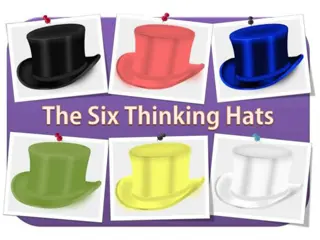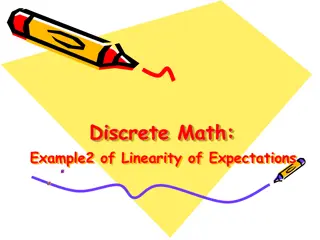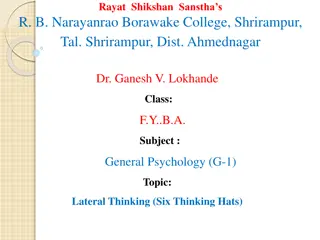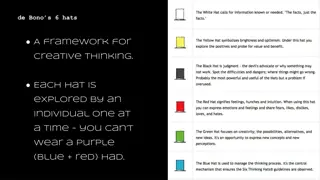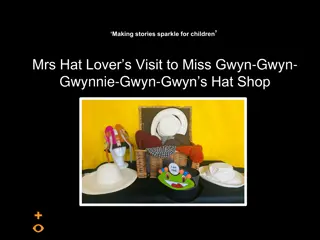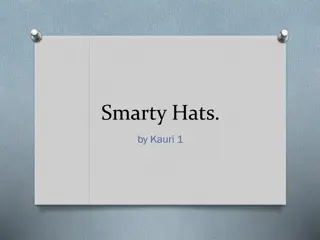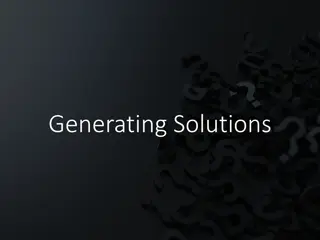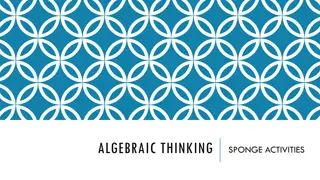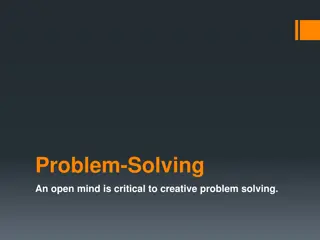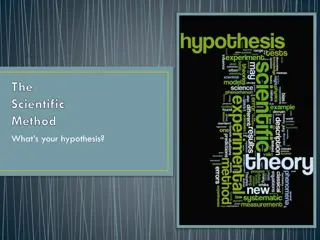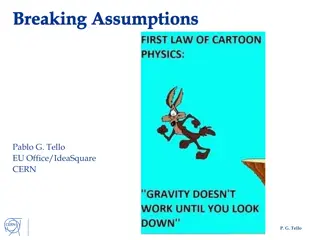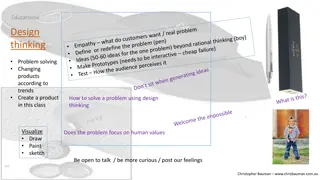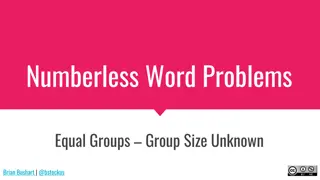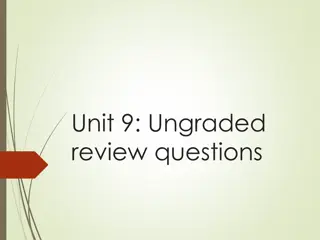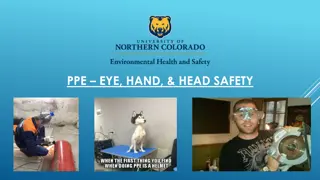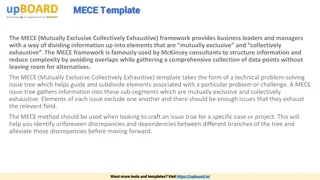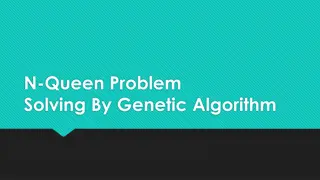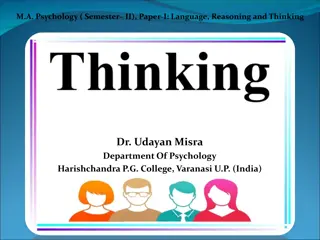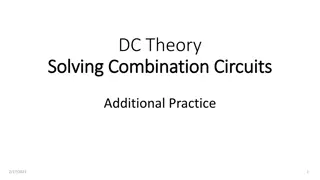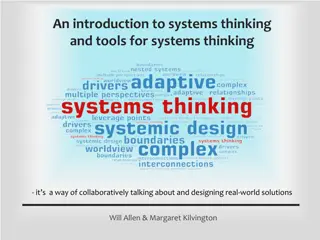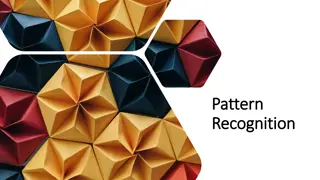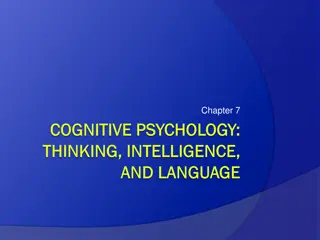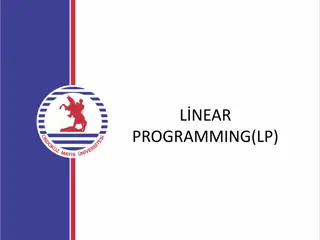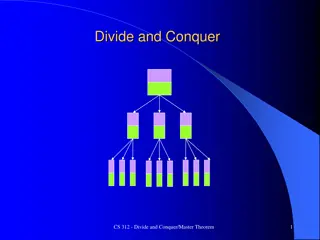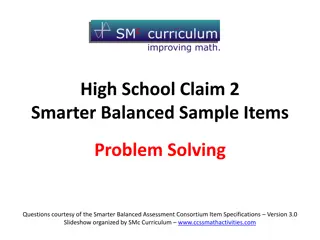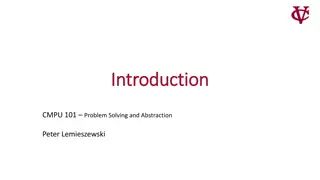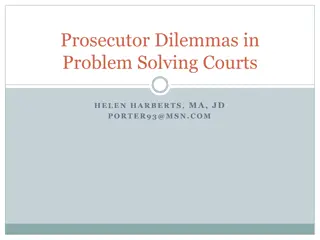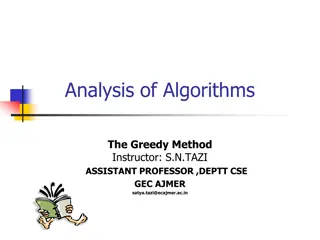Mastering Problem-Solving with the Six Thinking Hats Method
"Explore the Six Thinking Hats Method, a powerful tool for problem-solving by examining issues from different perspectives sequentially. Learn how each hat represents a unique viewpoint, facilitating thorough analysis and creative solutions. Discover the process, benefits, and practical tips for implementing this structured approach effectively in group settings."
Download Presentation

Please find below an Image/Link to download the presentation.
The content on the website is provided AS IS for your information and personal use only. It may not be sold, licensed, or shared on other websites without obtaining consent from the author. Download presentation by click this link. If you encounter any issues during the download, it is possible that the publisher has removed the file from their server.
E N D
Presentation Transcript
Lessons Learned A Six Thinking Hats Play
Six Thinking Hats Six thinking hats is a tool that can help us look at problems from different perspectives one at a time to avoid confusion from too many angles crowding your thinking. Source: Edward de Bono Focus - Everyone explores the situation from each perspective or hat at the same time. The sequence of hats can change - but everyone must change direction at the same time Each hat represents a different perspective Provides a common language and process
The Six Thinking Hats: A Review The White Hat Just the Facts The Red Hat Feelings and Intuition The Yellow Hat Optimism: Probe for Benefits The Green Hat Creativity The Black Hat Judgement and Caution The Blue Hat Process
Six Thinking Hats Depending on your problem, hats can be used in many sequences and not all hats are necessary. Examples: Initial ideas - Blue, White, Green, Blue Quick feedback - Blue, Black, Green, Blue Solving problems - Blue, White, Green, Red, Yellow, Black, Green, Blue Identifying solutions - Blue, White, Green, Blue
Lessons Learned Sequence Black Hat: Judgement Blue Hat: Process Yellow Hat: Benefits Blue Hat: Process White Hat: Facts
Tools Needed Materials Needed Use Sharpie Markers (Easier to Read) 3 x 3 Post-It Notes Easel Pad (large 24 x30 Post-it Notes)
Preparation Prior to meeting, identify an issue or problem to solve with the group For each hat that you are using prepare individual easel pads with a hat & category name at the top. For example: Red (Emotions), White (Facts), Yellow (Benefits), Green (Creativity), Black (Judgement) Hang easel pad papers on wall in your order of operation White hat - may take the longest. Send questions to team before meeting allowing team members to come prepared with needed data
Directions For each hat (1 at a time): 1. Two (2) minutes of individual brainstorming (more ideas the better) 2. Team focuses on answering one hat at a time 3. Write one (1) idea per Post-It note -be specific 4. For example: More phone training , instead of training 5. Use only 6-7 words per Post-It note
Directions After 2 minutes: Each team member presents their Post-It Notes -5 minutes for entire team 1. Team member puts Post-it Note on the Easel Paper for current hat 2. Group similar ideas together in each hat 3. Continue in this fashion until you move through all of the hats
Manage the process Make sure the hats are followed Why are we here? Lessons Learned Why are we talking about it? Continuous learning to make improvements Process Blue Hat
Project Review What was your goal? What did you accomplish What information do we still need? Nothing But the Facts Answer all the above questions. White Hat: Just the Facts
Explore the positives and probe for value and benefits What Worked? What went well? What were some good points? Yellow Hat: Optimism, Probe for Benefits
Signifies caution. What didn t go well? What could be changed? What are some obstacles, downsides, and weaknesses? Caution! What did not go as planned? What did we learn? Black Hat: Judgement and Caution
What conclusions or summaries can we make in moving forward on the issue or problem? Process What are the next steps (if any)? Blue Hat


